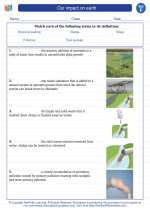Our impact on earth -> mesosphere
Characteristics of the Mesosphere
The mesosphere is a region of the atmosphere that experiences extremely low temperatures. In this layer, the temperature decreases with increasing altitude, reaching as low as -90 degrees Celsius (-130 degrees Fahrenheit) near the top of the mesosphere. This frigid environment makes it the coldest layer of the Earth's atmosphere.
Another notable characteristic of the mesosphere is the presence of the mesopause, which is the boundary between the mesosphere and the thermosphere. The mesopause is where the temperature reaches its lowest point in the atmosphere.
Importance of the Mesosphere
The mesosphere plays a crucial role in protecting the Earth from meteoroids. When these celestial objects enter the Earth's atmosphere, they burn up in the mesosphere due to the high concentration of atmospheric gases. As a result, the mesosphere serves as a shield, preventing most meteoroids from reaching the Earth's surface.
Additionally, the mesosphere is instrumental in the formation of noctilucent clouds, which are rare, luminous clouds that can be observed at high latitudes during the summer months. These clouds form in the mesosphere when water vapor freezes around dust particles, creating stunning displays in the night sky.
Study Guide for the Mesosphere
- Temperature: What is the typical temperature range in the mesosphere? Why does the temperature decrease with increasing altitude in this layer?
- Mesopause: What is the mesopause, and where is it located in the atmosphere? Why is it significant?
- Meteoroid Protection: How does the mesosphere protect the Earth from meteoroids? What happens to most meteoroids that enter the mesosphere?
- Noctilucent Clouds: What are noctilucent clouds, and where do they form? What makes them unique compared to other cloud types?
Understanding the mesosphere and its role in the Earth's atmosphere is essential for gaining insights into atmospheric science and its impact on our planet.
[Mesosphere] Related Worksheets and Study Guides:
.◂Science Worksheets and Study Guides Sixth Grade. Our impact on earth
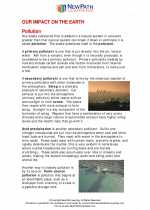
 Worksheet/Answer key
Worksheet/Answer key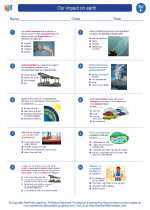
 Worksheet/Answer key
Worksheet/Answer key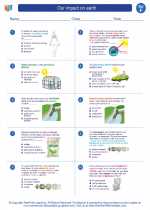
 Worksheet/Answer key
Worksheet/Answer key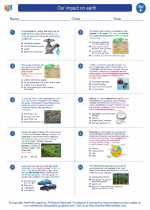
 Vocabulary/Answer key
Vocabulary/Answer key